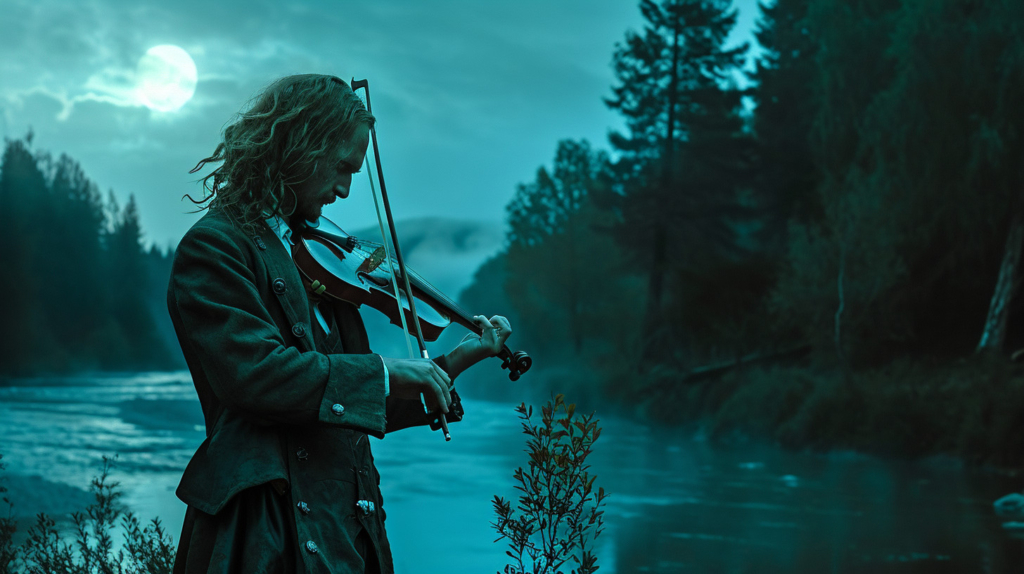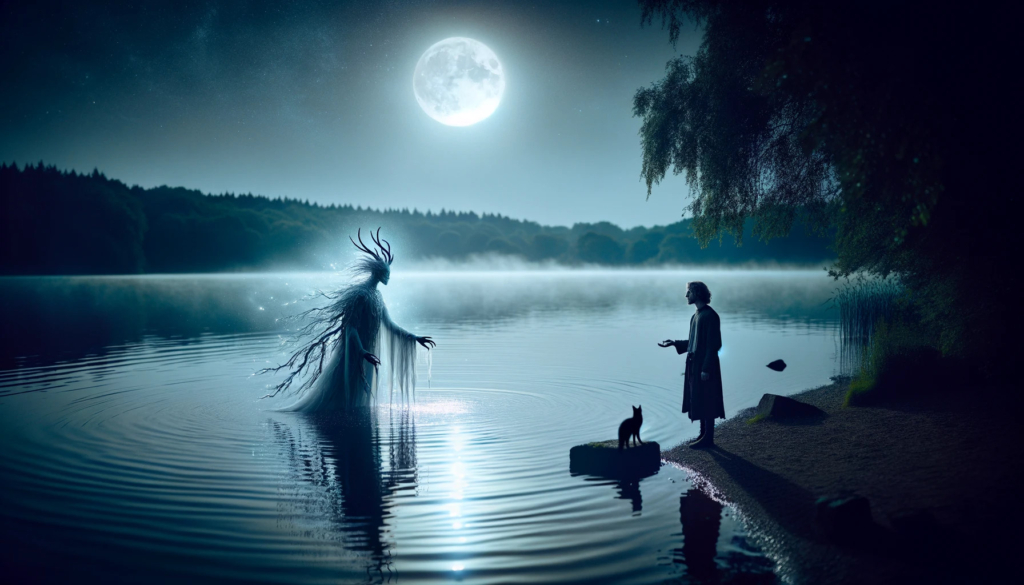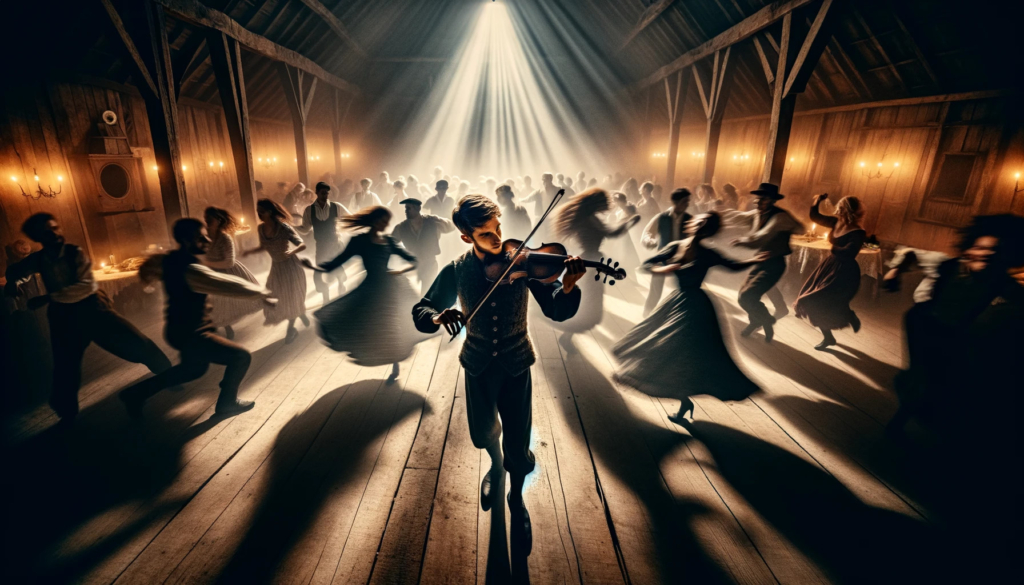Next up among our mythic creatures is the Nix (Swedish: Näcken).
The Nix is a water creature, who lives in lakes, rivers, streams and brooks, and tried to lure people into the waters to drown. Like many other of the Nordic supernatural beings he is a shapeshifter, and can take the form of animals or even things. But most often he appears as a man, with long green or white hair.
I have always believed that there was ONE Nix (like Santa, one person), but through furter studies, I have learned that it was a species. There could even live more than one Nix in a lake or stream, and they would fight each other for dominance.
It could explain the regional differences in how the Nix is described. In south of Sweden, the Nix has erotic overtones, he tries to seduce women, to enchant them and bring them to his underwater realm. That is probably where the (more modern) notion comes from that the Nix used to be naked, however he selldom appears naked in Folktales. Rather the opposite, he often appears as a well-dressed gentleman.

Further north, the Nix is more associated with music, and was often seen with an instrument of some sort, often the fiddle but sometimes he plays the flute or harp as well. In this version, rather than seducing he enchants people with his music, making them follow the sound into the depths.
People could make bargains with the Nix, mostly to teach them how to play an instrument. This was however VERY dangerous!
The Nix was a masterful music player. His tunes could put people in trances and they would follow the music all the way down below the surface. But some people were brave (or foolish?) enough to approach the Nix to learn the secrets of playing great music.

If you wanted to learn his tricks, you had to go down to the water were he dwelled, three Thursday nights in a row. On the third night, the Nix would show up. Then, you had better have a gift or he would drag you under the surface. For some reason, he liked black cats.
If he accepted the gift, he would teach you how to play. But the Nix was a trickster, so there was usually some strings attached.
One story that exists in many variations is that a young man had sought the Nix to learn how to play the fiddle. The Nix taught him many tunes – including an enchanted tune that he was not allowed to play to others. Later on, the young man played at a dance, and when he had played all the regular tunes, he decided to play the forbidden music.

All that heard the music fell under its spell and were compelled to keep dancing. In worst case scenario, they would continue to dance even after their bones had been worn down (in the most ridiculous stories only the heads keeps ”dancing” on the floor). But in most stories they were saved by someone, for example a deaf person who could not hear the music but understood what was happening, and cut the strings to the fiddle, which broke the spell.
But there are also tales that show a more human side to the Nix.
In some of the stories, the Nix’s tendency of luring people to drown in the rivers and lakes were an unfortunate sideffect of him being lonely. He simply wanted company, but since humans cant survive under water, he would never get the company he so desperately needed.
As I have mentioned in a previous post, the church believed these supernatural beings in the Nordic Folklore to be children of Adam’s first wife, Lilith, and they were not part of the Christian community and therefore they had no soul.

But not everyone bought in to that narrative, or at least didn’t seem to think it fair. One story goes:
The Nix sits in his water, playing the fiddle and singing about how he will receive God’s mercy on Judgment Day. A man riding by on his horse hears this song and calls to the Nix, mocking him:
“You belong to the trolls and can never be blessed. For you to enter the kingdom of Heaven is as impossible as for the riding crop in my hand to carry green leaves”
The Nix returned to the depths, crying, and the man rode on. However, later on he found green leaves to sprout from his riding crop.
That tale seems to show a belief that the mythological beings were also God’s children, or at least that only God could decide whether or not they could enter into Heaven.
Sources:
Egerkrans, Johan. Nordiska väsen. (2023)
Schön, Ebbe. Älvor, vättar och andra väsen. (1996)
Wall, Tora. Folktrons väsen. (2021)

